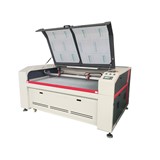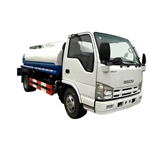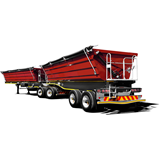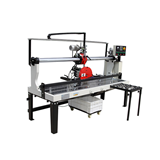Key Takeaways
- The "Small Business Tax" is real: SMEs often pay higher unit prices than large corporations simply due to a lack of volume leverage. Overcoming this requires a strategic shift in how you procure.
- Two paths to power: You can gain leverage through Formal Buying Groups (pooling volume with others) or Digital Marketplaces (using market transparency and competition to drive down price).
- Marketplaces offer flexibility: Unlike buying groups, which often require membership fees and supplier lock-ins, digital marketplaces allow you to compare quotes from multiple suppliers for specific capital equipment needs without restrictive contracts.
- Capital Equipment vs. Consumables: Buying groups are often best for high-volume, low-value consumables (like PPE or fuel), while marketplaces are superior for high-value Capital Expenditure (CapEx) like machinery and vehicles.
- Efficiency is money: Using a platform to request multiple quotes saves hours of administrative time, which is often the biggest hidden cost in SME procurement.
Introduction: Leveling the playing field for Australian SMEs
For industrial business owners in Australia, the economic landscape of 2025 is defined by a simple, brutal truth: it is expensive to be small. While Tier 1 mining and construction giants leverage their massive scale to secure deep discounts on machinery and equipment, SMEs are often left paying the "sticker price."
Navigating rising energy costs, skilled labour shortages, and supply chain volatility requires every dollar of capital expenditure to work harder. You cannot afford to overpay for your assets.
Traditionally, the only way for a small business to get a "big business" deal was to join a formal Buying Group. While this remains a valid strategy for some, the rise of digital B2B marketplaces has introduced a new, more flexible way to access purchasing power.
This guide explores how Australian SMEs can cut equipment costs by understanding the difference between Collective Buying and Marketplace Competition, and how to choose the right strategy to protect your bottom line.
Option 1: The Traditional Buying Group (Collective Power)
The traditional method of generating leverage is the Buying Group or Group Purchasing Organisation (GPO). This involves businesses banding together to pool their volume.
How it works
A central entity negotiates contracts with specific suppliers. Ideally, because the group represents millions in spend, suppliers offer discounted rates.
Where it shines: Consumables
Buying groups are generally most effective for high-frequency, low-value purchases.
- Fuel & Energy: Negotiating 4c off per litre at the bowser.
- Consumables: Discounts on welding gas, PPE, or office supplies.
- Freight: National rates for courier services.
The hidden costs of the group model
While effective for consumables, buying groups can be restrictive when it comes to major industrial equipment purchases:
- Membership Fees: Many groups charge joining fees or monthly subscriptions that eat into your savings.
- Supplier Lock-in: You are often restricted to the group’s "preferred suppliers." If the group has a deal with Brand X forklifts, but you need the specific capabilities of Brand Y, the group adds no value.
- Volume Commitments: Some contracts require you to direct a certain percentage of your spend to group suppliers, limiting your agility.
Option 2: The Digital Marketplace (Competitive Power)
In recent years, a second model has emerged that is often better suited to the sporadic, high-value nature of industrial equipment purchasing: the B2B Marketplace (like IndustrySearch).
Instead of relying on a pre-negotiated contract with one vendor, a marketplace gives you leverage through transparency and competition. It forces suppliers to compete for your business.
How it works
You post your specific requirement, whether it’s a 30-tonne excavator, a CNC lathe, or a fleet of commercial vehicles, and relevant suppliers respond with quotes.
Where it shines: Capital Equipment (CapEx)
For industrial SMEs, purchasing heavy machinery is not a daily occurrence. It is a strategic investment. Marketplaces offer distinct advantages here:
- Zero Cost: Unlike buying groups, using a marketplace to source equipment is typically free for the buyer.
- No Lock-in: You are not tied to a specific brand. You can compare a quote for a premium European machine against a cost-effective Asian model side-by-side.
- Market Discovery: You might find a supplier in a different state who has the exact machine in stock and is willing to offer a deal to move it, something a static buying group contract would miss.
The "Efficiency Dividend": Cutting the administrative cost of buying
When discussing purchasing power, most business owners focus solely on the purchase price. However, for an SME, the administrative cost of procurement is often just as high.
Consider the time it takes to buy a new piece of industrial machinery manually:
- Research: Hours spent Googling brands and specs.
- Outreach: Calling or emailing five different dealers (half of whom don't call back).
- Comparison: Trying to decipher five different quote formats to see if you are comparing apples with apples.
If your hourly rate as a business owner is $150, and you spend 10 hours on this process, you have effectively added $1,500 to the cost of the machine before you’ve even bought it.
Marketplaces solve this via consolidation. By submitting a single Request for Quote (RFQ) on a platform like IndustrySearch, you trigger that entire process with one action. The suppliers come to you. This efficiency dividend is a form of cost-cutting that is often overlooked but highly valuable.
Option 3: Strategic Procurement - The Hybrid Approach
Smart industrial businesses don't choose one or the other; they use the right tool for the job. A "Hybrid Procurement Strategy" allows you to maximise savings across your entire P&L.
1. Use Buying Groups for the "Small & Frequent"
If you have a trade association membership (e.g., Master Builders, AMTIL) that offers fuel cards or insurance deals, use them. These are set-and-forget savings on operational expenses (OpEx).
2. Use Marketplaces for the "Big & Strategic"
When it comes to purchasing assets (CapEx), machinery, vehicles, plant equipment, use a marketplace.
- Define the need: Be specific about what you need (capacity, power, size).
- Cast a wide net: Use IndustrySearch to reach suppliers nationwide, not just the ones in your local directory.
- Leverage the competition: When you have three quotes in your inbox, you have negotiating power. You can legitimately say to Supplier A, "I have a competitive offer from Supplier B that includes installation; can you match that?"
How to effectively use a marketplace for equipment
To get the most out of the marketplace model, you need to be an active participant. Here is how to drive the best deal:
- Be specific in your RFQ: The more detail you provide in your initial request (e.g., "Need a 2.5t forklift, container mast essential, usage approx 15 hours/week"), the more accurate and competitive the initial quotes will be.
- Ask about "total package" value: When comparing quotes, don't just look at the machine price. Ask suppliers to bundle in extras to win the deal. Can they include the first 12 months of servicing? Can they throw in delivery? Can they offer a better finance rate?
- Check the reviews: Use the marketplace to validate the supplier. A cheap price is expensive if the after-sales support is missing. Look for suppliers with strong ratings and a track record of reliability.
Conclusion: You have more power than you think
The narrative that SMEs are at the mercy of suppliers is outdated. While you may not have the sheer volume of a mining multinational, the digital economy has given you something just as powerful: Choice and visibility.
By understanding the difference between operational consumables (suited for buying groups) and capital investments (suited for marketplaces), you can build a procurement strategy that protects your cash flow.
Don't settle for the first price you are given. Use the tools available to you. Whether it’s finding a better deal on a compressor, sourcing a hard-to-find part, or financing a new truck, the power to compare and compete is now at your fingertips.



-160x160-state_article-rel-cat.png)
-160x160-state_article-rel-cat.png)






-160x160-state_article-rel-cat.png)



-160x160-state_article-rel-cat.jpg)








